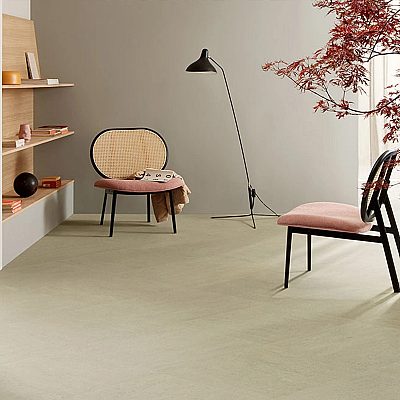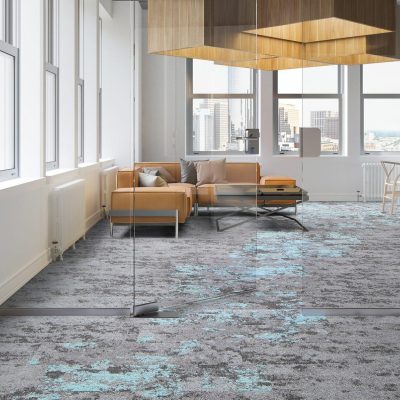Healthy Affordable Housing Case Studies:
Foundation Communities
Foundation Communities is a 25 year old non-profit affordable housing developer based in Austin, TX. Their mission goes far beyond standard practices.
Every one of their developments is designed to be integrated into the wider community and provides a range of services to ensure that ‘families can succeed’. Foundation Communities positions education and healthy living at the core of their developments. They make learning centers part of every multi-family development providing day care facilities, after-school activities as well as adult classes, and community workshops providing information about healthier home cleaning and building maintenance practices. Notions of health here include access to well-designed housing, easy access to transportation and a long-term commitment to designing healthier interiors. The Learning Centers are at the center of each housing development and are primarily used by children who are most vulnerable to the impact of their environment.
Green building strategies have been used as a baseline approach for Foundation Communities' development.
They have pursued the Enterprise Green Communities certification since its inception in 2003, and continue to pursue LEED (Leadership in Energy and Environmental Design) Platinum criteria for all buildings. They are also exploring new standards, including the Living Building Challenge (LBC), a performance standard that includes a commitment to using healthier materials. They are using the Learning Center building as a pilot to test healthier building products using this certification. The learnings from such an endeavor can potentially be scaled up and incorporated in their future housing developments.
In order to ensure ongoing interior air quality and the functioning of the integrated green initiatives into the occupancy phase of their development, FC reaches out to the maintenance team and residents by providing workshops with a focus on energy efficiency practices, on-site recycling, and community gardening. Their dedication to health, financial stability, and green education encourage residents to conserve energy, use homemade cleaning products, and consider less toxic interior furnishings, to maintain indoor air quality.
Read this case study or download the PDF to the right of this page.
Foundation Communities
4 products
About Our Collections
The goal of our collections is to help promote transparency in the material ingredients of building products by fostering knowledge and awareness of products and materials for which life-cycle information is available, and that have environmentally, economically, and socially preferable life-cycle impacts.
Keep an eye out for the following symbols:
A Healthier Affordable Building Product
Products with the designation of "Healthier & Affordable" were specified and installed in at least one of our Case Studies of healthier affordable housing.
Available at the Donghia healthier Materials Library
The Donghia healthier Materials Library library is open to Parsons student and faculty. Learn more about access and opening hours here.
Low Embodied Carbon
“Embodied Carbon” is the total amount of carbon emitted during the process of making a material. *HML refers to a manufacturer's EPD to determine whether a product's A1-A3 carbon emissions falls within HML's threshold for Low Embodied Carbon.
New Product
This product has been added to the collection within the past six months.
Product in Development
Products with this designation identify they are currently scaling or only available in markets outside of the building industry. they could be experimental or in use in capsule collections.
Available in the EU
Products with this designation are currently available only in the European Union and identified as being an exemplary healthy option in the respective product group.
Ingredient Disclosures
There are several ways of evaluating a material’s health that we include with product information. Disclosures are reports by manufacturers about product ingredients, impacts, or other attributes.
Key Disclosures include:
Health Product Declaration (HPD)
A voluntary technical specification for reporting information on product contents and associated health information, intended to be the health-analogue to Environmental Product Declarations (EPDs).
Declare Label
Declare is a transparency platform and product database that answers three questions:
1. Where does a product come from?
2. What is it made of?
3. Where does it go at the end of its life?
Environmental Product Declaration (EPD)
A standardized format for communicating the environmental effects associated with a product’s raw materials extraction, energy use, chemical makeup, waste generation, and emissions to air, soil, and water.
Safety Data Sheet (SDS)
A reporting format that provides basic information about a material’s chemical ingredients, the potential safety hazards to installers, and recommended practices for installation.
USDA Certified Biobased Product Label
Managed by the U.S. Department of Agriculture (USDA), the goal of the BioPreferred Program is to increase the purchase and use of biobased products.
Other
| Category | Sub-category | Manufacturer | Product | Ingredient Disclosures | |
|---|---|---|---|---|---|
| Dimensional Surface | Engineered Stone | Caesarstone | Quartz Classic Collection | HPD Declare EPD SDS |
Quartz Classic CollectionUsed in Healthier Affordable HousingAvailable At the Donghia Materials LibraryCaesarstone's premium quartz can be used in both commercial and residential projects. Quartz provides a durable, low-maintenance surface for kitchens and bathrooms. This product also is Greenguard Gold Certified. CategoryDimensional Surface, Engineered StoneManufacturerCaesarstone
Material composition*Crystalline Silica and other natural Stone <85%, Cristobalite <50%, Polymeric Resin 7-15%, Additives 0-8% *as reported by the manufacturer AVAILABLE SIZINGCustom Sizes - available in 3/4” or 1-1/4” thickness COLORSAvailable in a variety of colors CERTIFICATIONS & DISCLOSURES
Health Product Declaration (HPD)
Declare Label
Environmental Product Declaration (EPD)
Safety Data Sheet (SDS)
USDA Certified Biobased Product Label
Other
GREENGUARD | Gold
Contributes to LEED credits
Free of Red List Ingredients
Last UpdatedFebruary 20, 2025 |
| Insulation / Fibrous, Cellulosic, Granular | Cellulose | US Greenfiber LLC | Cellulose Fiber Insulation | HPD Declare EPD SDS |
Cellulose Fiber InsulationThis product provides a natural insulation alternative that optimizes human and environmental health. Greenfiber's cellulose insulation is free from formaldehyde, asbestos, glass fibers, and mineral wool. The product is also made with up to 85% recycled materials from local sources, diverting hundreds of tons of paper from landfills and reducing energy consumption from transporting raw materials. Greenfiber's R-value is declared at 3.8/inch. CategoryInsulation / Fibrous, Cellulosic, Granular, CelluloseManufacturerUS Greenfiber LLC
Material composition*Cellulose Fiber <86%, Boric Acid <11%, Calcium Sulfate Dihydrate <2%, Distillate Mineral Oil <1% *as reported by the manufacturer AVAILABLE SIZING19.05 lb Package COLORSOff-White CERTIFICATIONS & DISCLOSURES
Health Product Declaration (HPD)
Declare Label
Environmental Product Declaration (EPD)
Safety Data Sheet (SDS)
USDA Certified Biobased Product Label
Other
Declare | Red List Free
Contributes to LEED credits
Additional DocumentsLast UpdatedDecember 16, 2025 |
| Resilient | Linoleum | Forbo Flooring Systems | Marmoleum Modular | HPD Declare EPD SDS |
Marmoleum ModularUsed in Healthier Affordable HousingAvailable At the Donghia Materials LibraryLow-Embodied Carbon MaterialMarmoleum Modular tiles are made from natural materials. The product has a low carbon footprint, and is free from toxic materials such as phthalates. The modular tiles allow you to mix and match to design a unique floor surface. Per Forbo's product-specific EPDs, these Marmoleum flooring system meets HML's criteria for low embodied carbon. It contains 100% Biobased Content and has been awarded the USDA Certified Biobased Product Label in the BioPreferred® Program. CategoryResilient, LinoleumManufacturerForbo Flooring Systems
Material composition*Wood Flour 25-50%, Linseed Oil 24-45%, Reused Marmoleum 20-24%, Calcium Carbonate 13-23%, Gum Rosin 4-6%, PET backing 4%, Titanium Dioxide 2%, Pigments: 0-3% (Bayferrox red 130, Black PJ3013, Blue PS 5.1-87, Carbon Black pearls 120, Cromophtal Red K 3830 C20, IOX Yellow 02, Irgalite red K 4170 FP C20, Magnesium oxide (MgO), OMNICOLOR-orange DW23132006-PN, Red 147008-C20, Sicoplast V Blue 68-8110, Yellow 132026, Yellow PS 2.1-26, Zinc oxide), Finish 0-1% (Polyester Acrylate, Urethane Acrylate) *as reported by the manufacturer AVAILABLE SIZING9.8”x 9.8”, 9.8”x 19.69” and 19.69”x 19.69” Tiles COLORSAvailable in a variety of colors CERTIFICATIONS & DISCLOSURES
Health Product Declaration (HPD)
Declare Label
Environmental Product Declaration (EPD)
Safety Data Sheet (SDS)
USDA Certified Biobased Product Label
Other
Declare | Red List Free
Contributes to LEED credits
USDA Certified Biobased Product Label
Additional DocumentsLast UpdatedDecember 16, 2025 |
| Tufted Carpet Tile | Synthetic | Mohawk | Nylon Modular Carpet Tiles on EcoFlex NXT | HPD Declare EPD SDS |
Nylon Modular Carpet Tiles on EcoFlex NXTMohawk's EcoFlex NXT Modular Carpet Tiles are Living Building Challenge Red-List Free. One of the company's product lines with this composition, the Lichen Collection, is the first flooring product to achieve the International Living Future Institute’s Living Product Challenge Petal Certification. Additionally, this product is designed to be installed using Mohawk's FlexLok tabs, the only red-list free carpet installation system on the market. These carpet tiles have a composite construction of a tufted
nylon face, primary backing, fiberglass scrim, pre-coat polymer with an extruded polyolefin modular backing. CategoryTufted Carpet Tile, SyntheticManufacturerMohawk
Material composition*Face: Nylon 6 25-35%, Nylon 6,6 0-10%, Nylon 6 (with Stain Resistance) 0-25%; Coating: Limestone (Calcium Carbonate) 25-45%, Ethylene-Propylene Copolymer 10-20%, Calcium Carbonate 8-10%; Primary Backing: Polyethylene Terephthalate (PET) 4-10%, 2-Propenoic Acid, 2-Methyl-, Methyl Ester, Polymer with 1,3-Butadiene (Butadiene Acrylate) 1-5%, Polypropylene 0.01-1%, 2,5-Furandione, Polymer with Ethene and 1-Propene 0.01-0.1%, Polyethylene 0.001-0.05%; Scrim: Continuous Filament Glass Fiber (Non-Respirable) 1-2%, 2-Propenoic Acid, Butyl Ester, Polymer with Ethyl 2-Propenoate, N-(Hydroxylmethyl)-2-Propenamide, 2-Propenamide and 2-Propenenitrile 0.01-0.2%; Topical: Benzenesulfonic Acid, Hydroxy-, Monosodium Salt, Polymer with Formaldehyde and 4,4’-Sulfonylbis[phenol] 0.001-0.05%, 2-Propenoic Acid, 2-Methyl-, Butyl Ester, Polymer with Butyl 2-Propenoate and Methyl 2-Methyl-2-Propenoate 0-1% *as reported by the manufacturer AVAILABLE SIZING12"x36" tiles COLORSA wide range of colorways CERTIFICATIONS & DISCLOSURES
Health Product Declaration (HPD)
Declare Label
Environmental Product Declaration (EPD)
Safety Data Sheet (SDS)
USDA Certified Biobased Product Label
Other
Declare | Red List Free
Additional DocumentsLast UpdatedMarch 18, 2024 |
Related Resources
Join Our Academic Network
Get Access to our carefully researched and curated academic resources, including model syllabi and webinars. An email from an academic institution or a .edu email address is required. If your academic institution does not use .edu email addresses but you would like to join the network, please contact healthymaterialslab@newschool.edu.
Already have an account? Log in